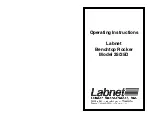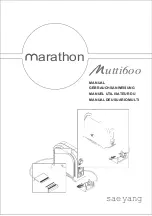
1-4
Moving Parts
- Keep all equipment, tubes and lines, loose clothing, hair and parts of the body away from
moving parts and pinch points.
Fluids
- Avoid spilling fluids on unit controls. If spills do occur: unplug unit and clean fluid from unit, wearing
rubber gloves to avoid any possibility of shock. Once fluid is removed, check operation of components in area
of spill.
Fluids remaining on controls can cause corrosion, which may cause components to fail or to
operate erratically, possibly producing hazards for patient and caregiver.
Patient Restraints
- Whether and how to use restraints is a decision that should be based on each patient’s
individual needs and should be made by the patient and the patient’s family, physician and caregivers, with
facility protocols in mind. Monitor restrained patients frequently.
CPR and Manual Rotation Features
- Caregivers and other hospital personnel are required to become
familiar with the CPR function and the emergency release procedures for automatically or manually rotating
the patient surface, as well as the other procedures required to access the patient in case of an emergency.
Avoid Fire Hazards
- To minimize the risk of fire, connect the unit’s power cord directly into a wall-mounted
outlet. Do not use extension cords or multiple outlet strips.
Power Cord
- Position power cord to avoid a tripping hazard and / or damage to the cord. Ensure power
cord is kept free from all pinch points and moving parts and is not trapped under casters. Improper handling
of the power cord can cause damage to the cord, which may produce risk of fire or electric shock.
Brakes
- Caster brakes should always be locked once the unit is in position. Verify wheels are locked before
any patient transfer to or from the unit.
Transport
- Always use at least two people when transporting unit.
Scale Readings
- Scales / patient weights are for reference only. Scale readings should not be relied upon for
medication dosage. All equipment on the unit is included in weight displayed.
General Protocols
- Follow all applicable safety rules and institution protocols concerning patient and
caregiver safety.
Summary of Contents for RotoProne
Page 2: ......
Page 6: ......
Page 8: ......
Page 39: ...2 27 ...
Page 40: ...2 28 ...
Page 76: ...4 8 ...
Page 82: ...6 2 ...













































